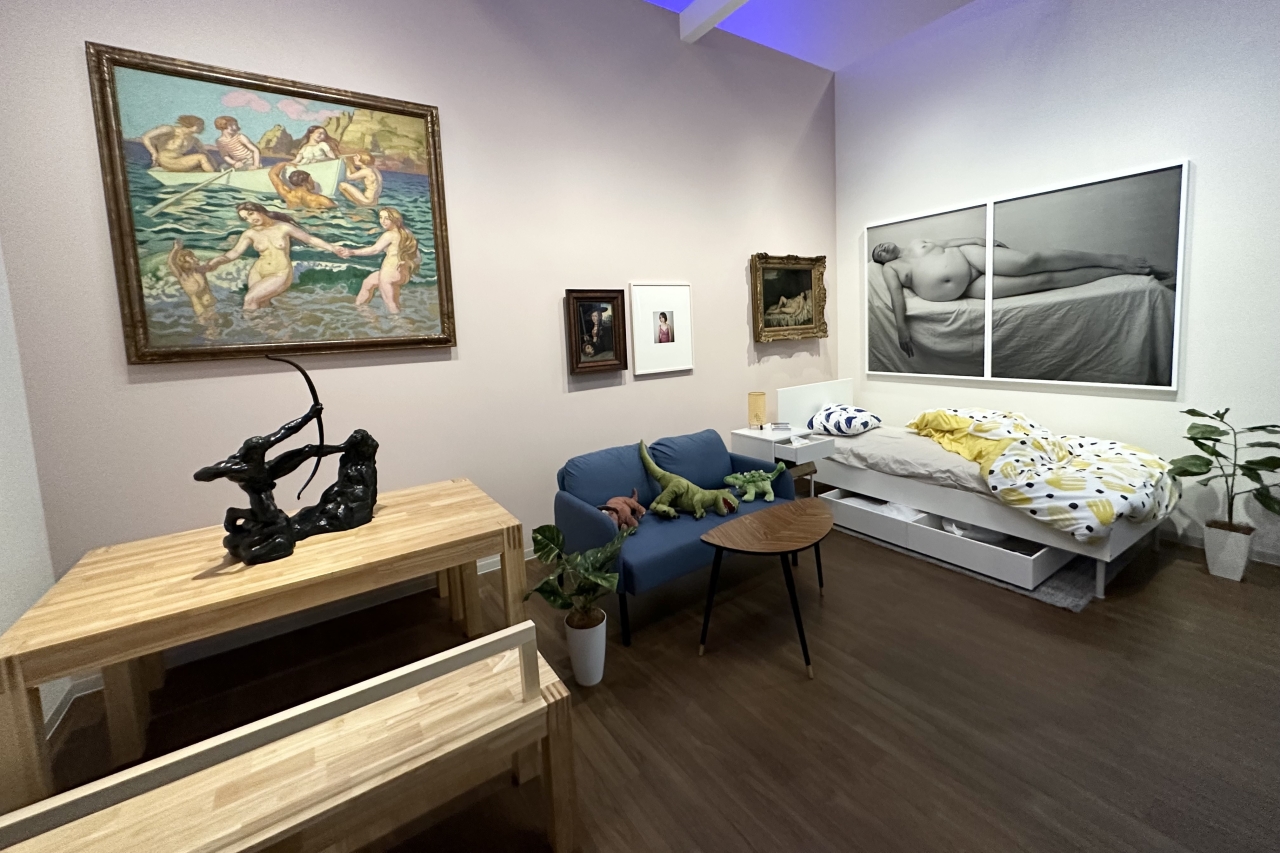
The National Museum of Western Art in Ueno, Tokyo, has opened its first-ever contemporary art exhibition , "Has this become a room where future artists can sleep? ──The National Museum of Western Art's 65th Anniversary Self-Question | Questions for Contemporary Artists." The exhibition will run until May 12, 2024.
Yuki Iiyama, Yoichi Umezu, Mai Endo, Tsuyoshi Ozawa, Nodoka Odawara, Natsuko Sakamoto, Hiroshi Sugito, Ryudai Takano, Kyo Takemura, Koki Tanaka, Toeko Tatsuno, Elena Tutacchikova, Rei Naito, Tadayoshi Nakabayashi, Yurie Nagashima, Purple Room (Yoichi Umezu + Hiromi Ando + Yoshiko Tsuzukihashi + Asako Hoshikawa + Saki Wakimoto), Rintaro Fuse, Hisao Matsuura, Futoshi Miyagi, Eboshi Yuasa, Kanji Yumisashi
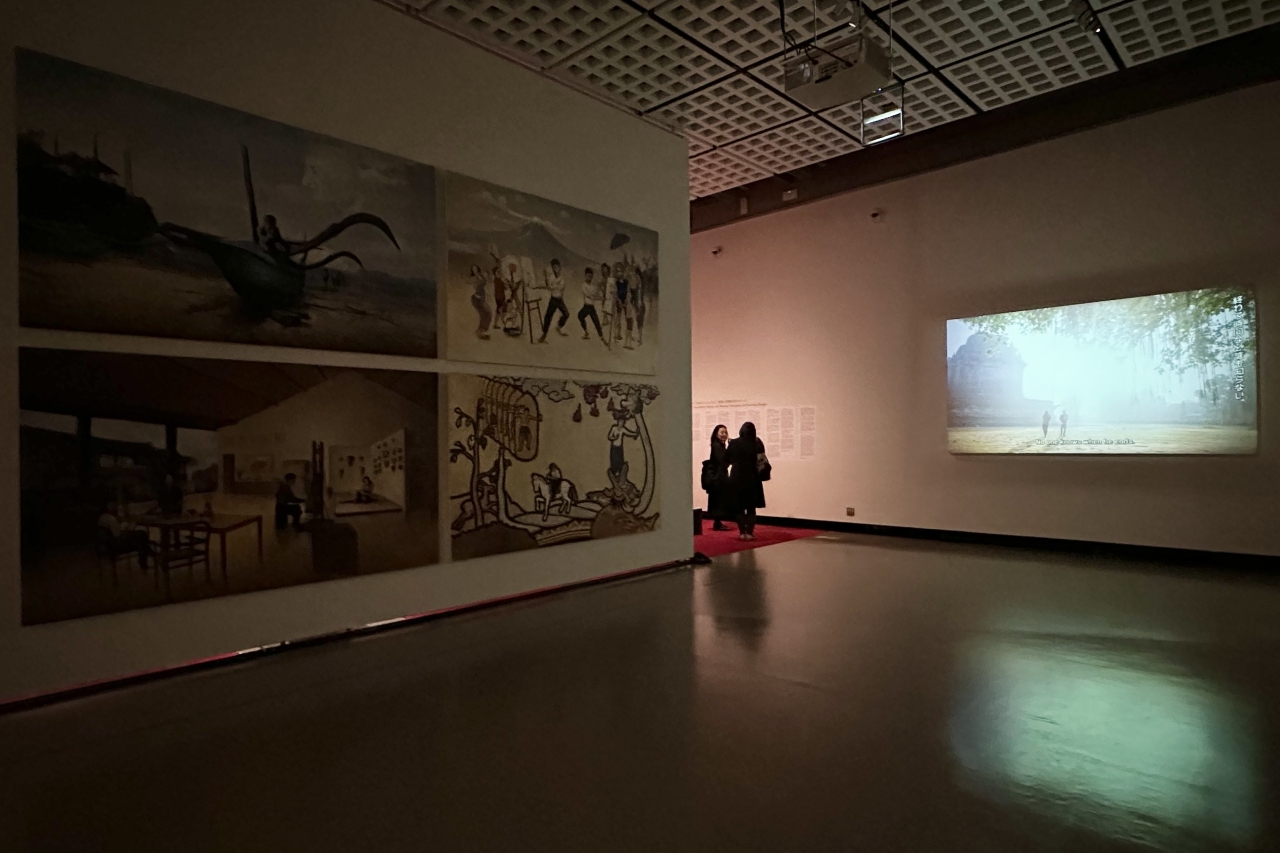
Tsuyoshi Ozawa's Exhibition
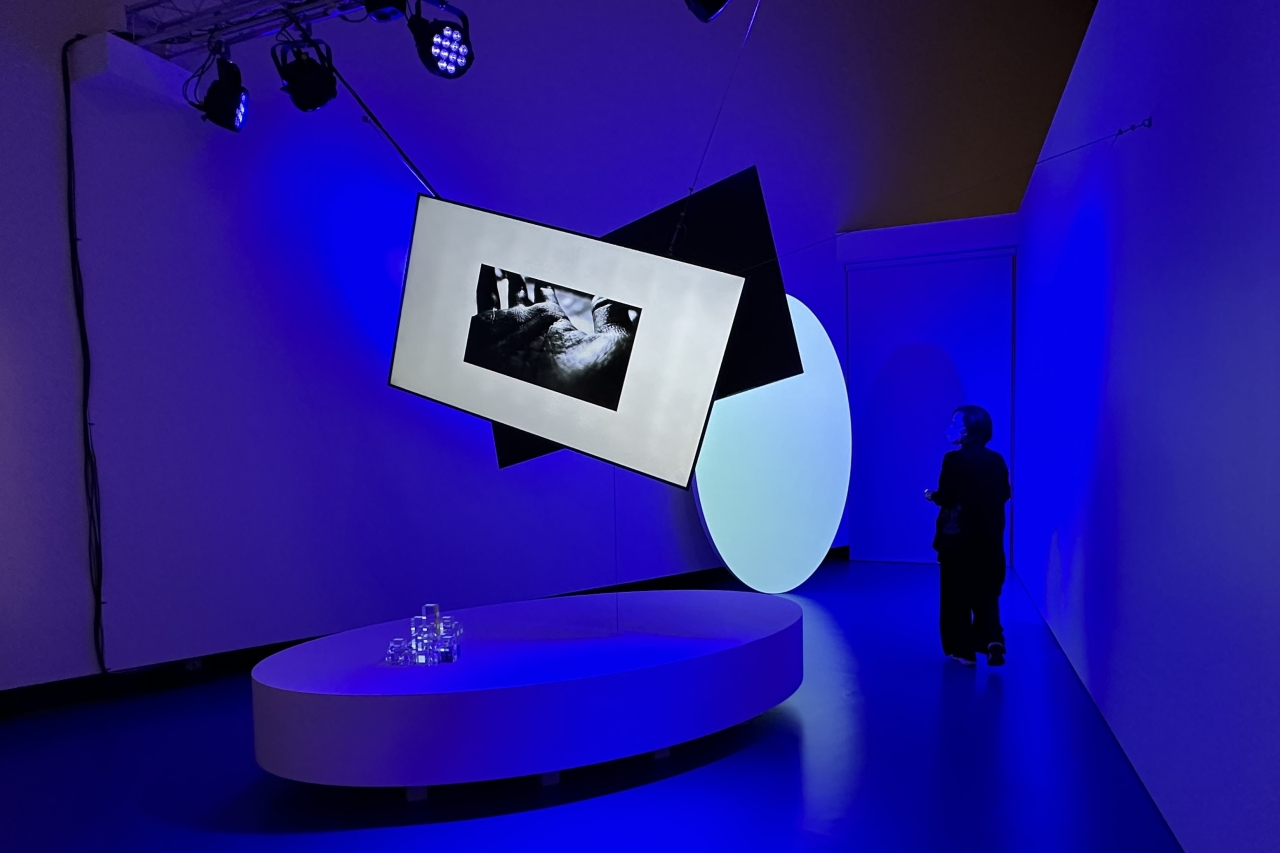
Rintaro Fuse "Dice Museum Project" (2024)
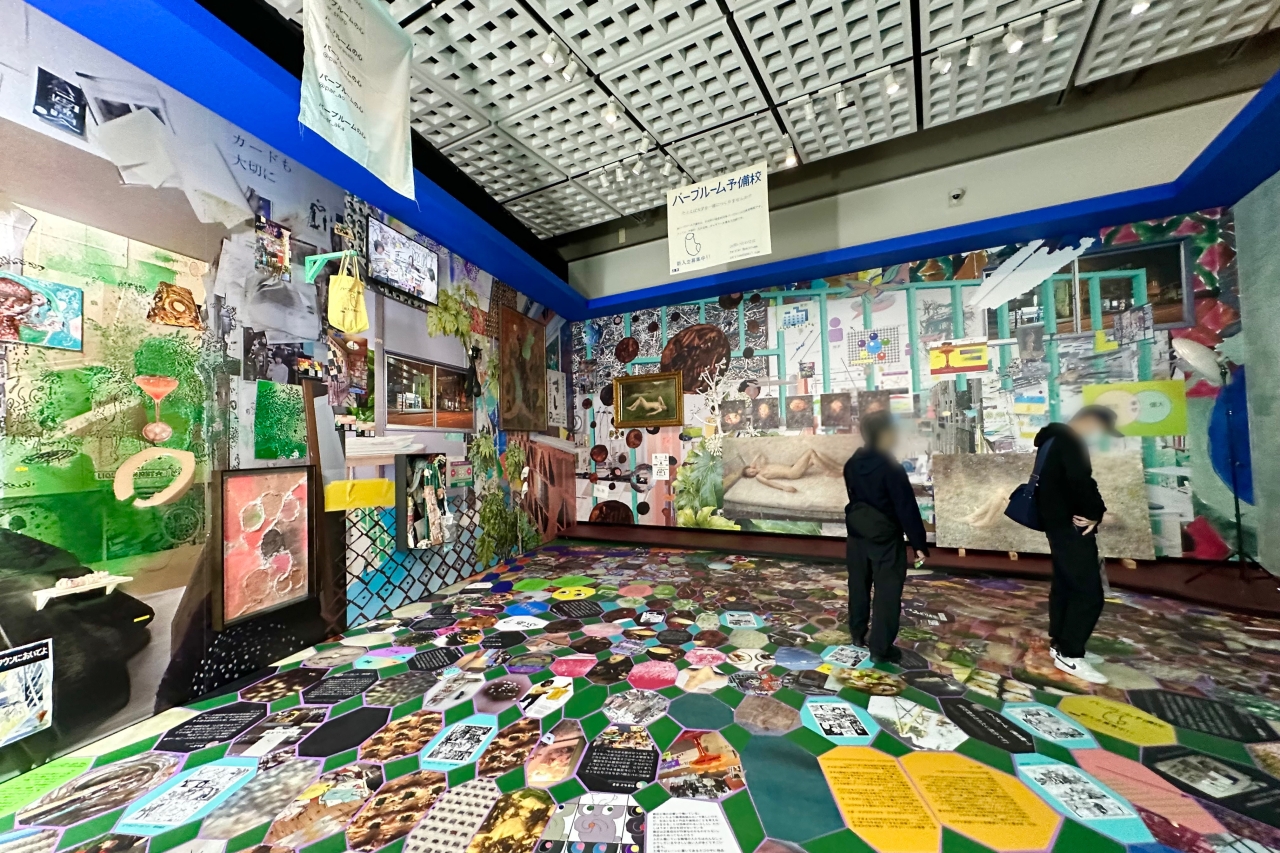
Parplume Exhibition
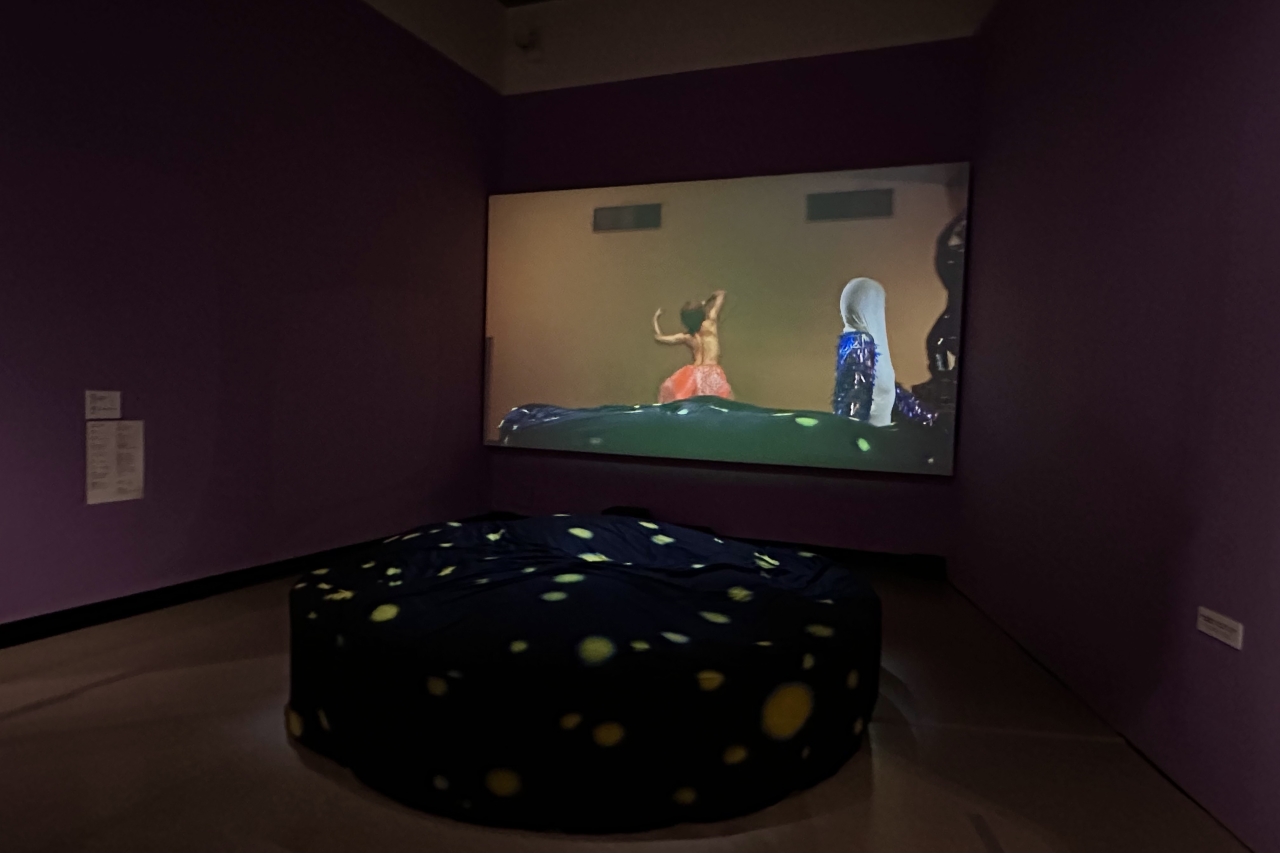
Mai Endo, "Omega and Alpha Ritual – National Museum of Western Art ver." (2024)
This is an unprecedented attempt to exhibit contemporary art on a large scale at the National Museum of Western Art, which has mainly collected and exhibited "Western art" up to the first half of the 20th century. At a press conference held prior to the event, it was stated that the purpose was not to broaden the horizons of understanding the collection by displaying works from the museum alongside contemporary works, nor to attract the interest of those with a strong interest in contemporary art.
Looking back at its history, we can see that the museum was expected to serve as an inspiring place to give birth to and nurture the artists of the future. Just as the Matsukata Collection, which formed the basis of the museum, was founded by Matsukata Kojiro, who wanted to expose Japanese painters to authentic Western art and encourage their creative endeavors.
However, until now, no serious question has been asked as to whether the museum has actually been able to become such a space.
This exhibition confronts this fact, posing the question of how the museum and its collection are related to contemporary expression and what role they can play in the emergence and meaning of contemporary artworks to 21 artists across genres, and looks at their responses through their works. It also introduces about 70 masterpieces of Western art from the museum's collection, including works by Claude Monet, Paul Cézanne, and Maurice Denis, making it a highly interesting exhibition.
For this reason, many of the artists exhibiting in this project are also active in fields such as criticism, and the amount of text available in the venue is much larger than in typical contemporary art exhibitions, with some works even consisting of the text itself.

Exhibition by Tadayoshi Nakabayashi
Artists have a variety of approaches to the question and concerns they face.
For example, in Chapter 1, "What kind of magnetic field of memory has this become?", Nakabayashi Tadayoshi, Naito Rei, and Matsuura Toshio juxtapose their own works with those of their predecessors in the museum's collection, such as Cezanne and Denis, who inspired Matsuura Toshio, and Odilon Redon and Rodolphe Bresdin, whose historical lineage is linked to Nakabayashi Tadayoshi's own expression. After defining the museum as a magnetic field in which the memories of artists who lived/are living in various eras and regions coexist and intertwine with each other, the museum examines through the works what kind of magnetic field the museum's collection forms.
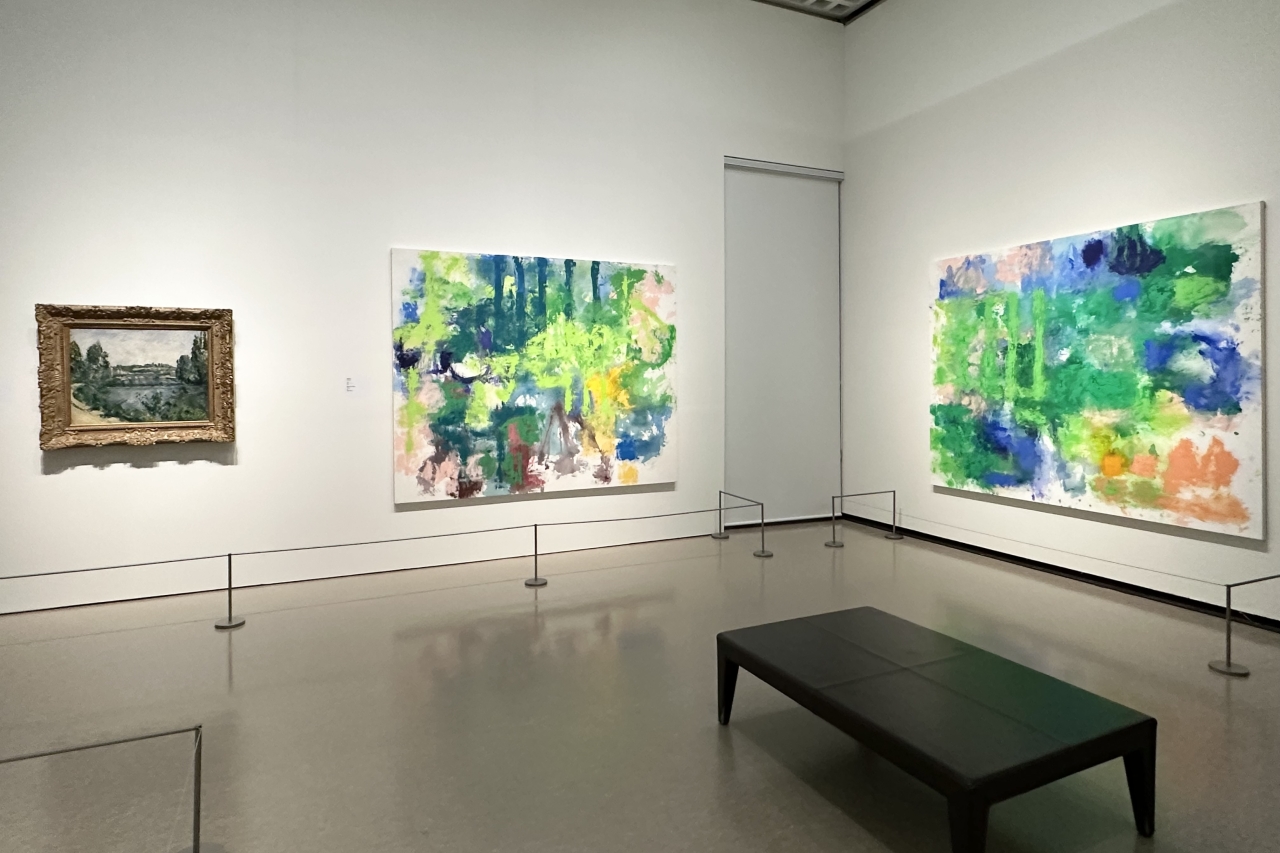
Exhibition of Toshio Matsuura / From left: Paul Cézanne's Bridge and Weir at Pontoise (1881), Toshio Matsuura's Cyprus (2022), and Toshio Matsuura's Green Territory (2024)
In Chapter 2, "What do you think about Japan having a 'National Museum of Western Art'?", Odawara Nodoka 's new installation "Sculpture/Overcoming Modernity – National Museum of Western Art Edition" features Auguste Rodin's sculpture "The Thinker," which is also the symbol of the museum, removed from its pedestal and lying on its side on a bright red carpet, creating a very eye-catching piece.

Exhibition at Odawara Nodoka / From left: Auguste Rodin's "The Thinker" (1881-82), Nishimitsu Makiyoshi's "Destruction" (1960s), Auguste Rodin's "The Age of Bronze" (1877 [original model])
The back side was completely visible, and many visitors sat down to take a good look at The Thinker, knowing that they would probably never have another opportunity to see it in this condition again. When The Thinker tipped over, the exquisite comfort of the cushion made it look as if he had fallen asleep, which was somewhat humorous.
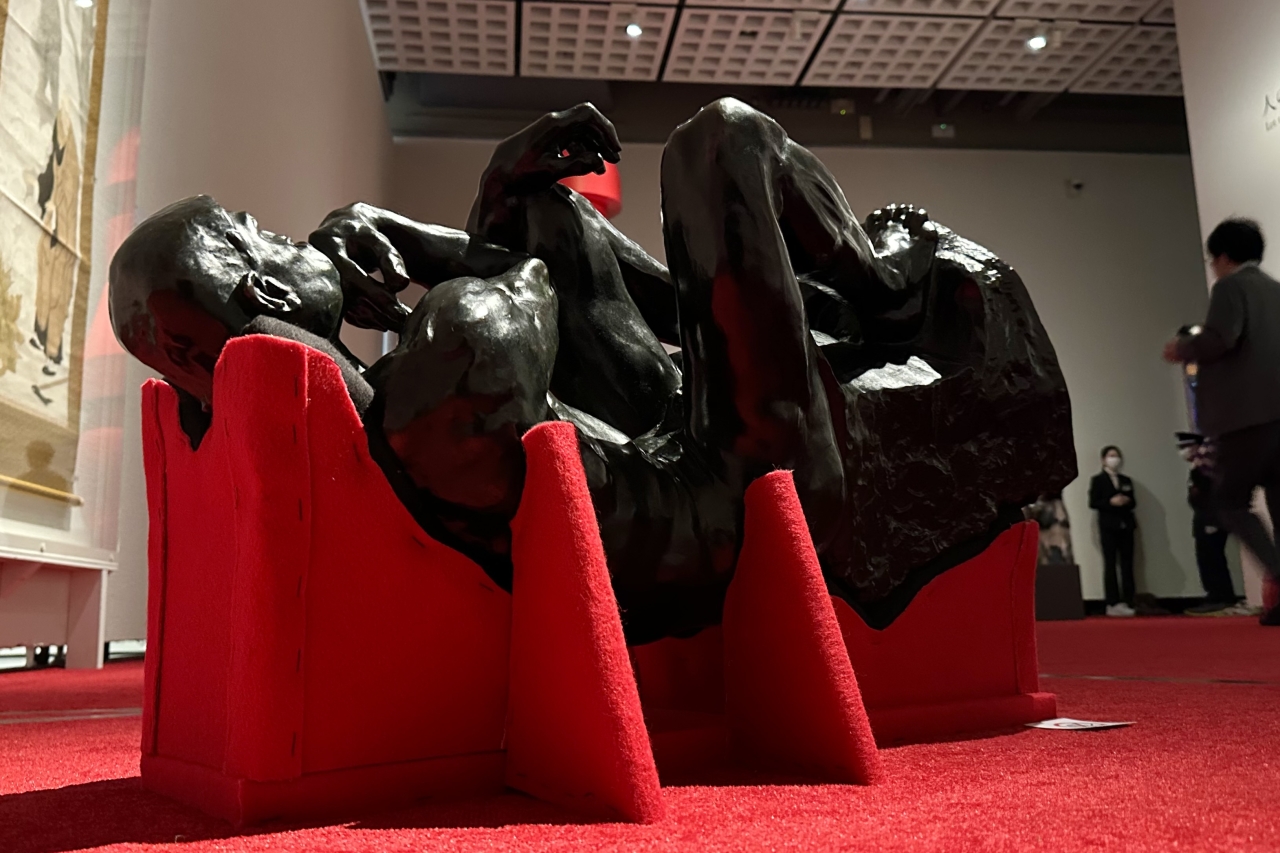
Exhibition at Odawara Nodoka / Auguste Rodin "The Thinker" (1881-82)
Odawara was particularly interested in the historical "distortion" that the museum inevitably underwent as Japan modernized, and the fact that, unlike Western art museums, it is built on ground prone to earthquakes.
This new installation includes elements such as The Thinker, who collapsed in the Great Kanto Earthquake of 1923, the Japanese painting Kishaku by Nishimitsu Mankichi, who drafted the Suiheisha Declaration during the Buraku Liberation Movement in 1922 and later converted to nationalism while in prison, an object modeling a five-story pagoda that collapses and is rebuilt every time there is an earthquake, and a seismic isolation platform developed exclusively by the museum. The installation presents a complex pose of the ideological issues of Japan that Odawara considers to be earthquakes and ideological conversion, overlapping "overturning" with "conversion."
In chapter 4, "Can this be a place for diverse lives/sexualities?", Takano Ryudai recreates the space of human "life" within the museum's exhibition room, which aims to be a tasteless, neutral place.
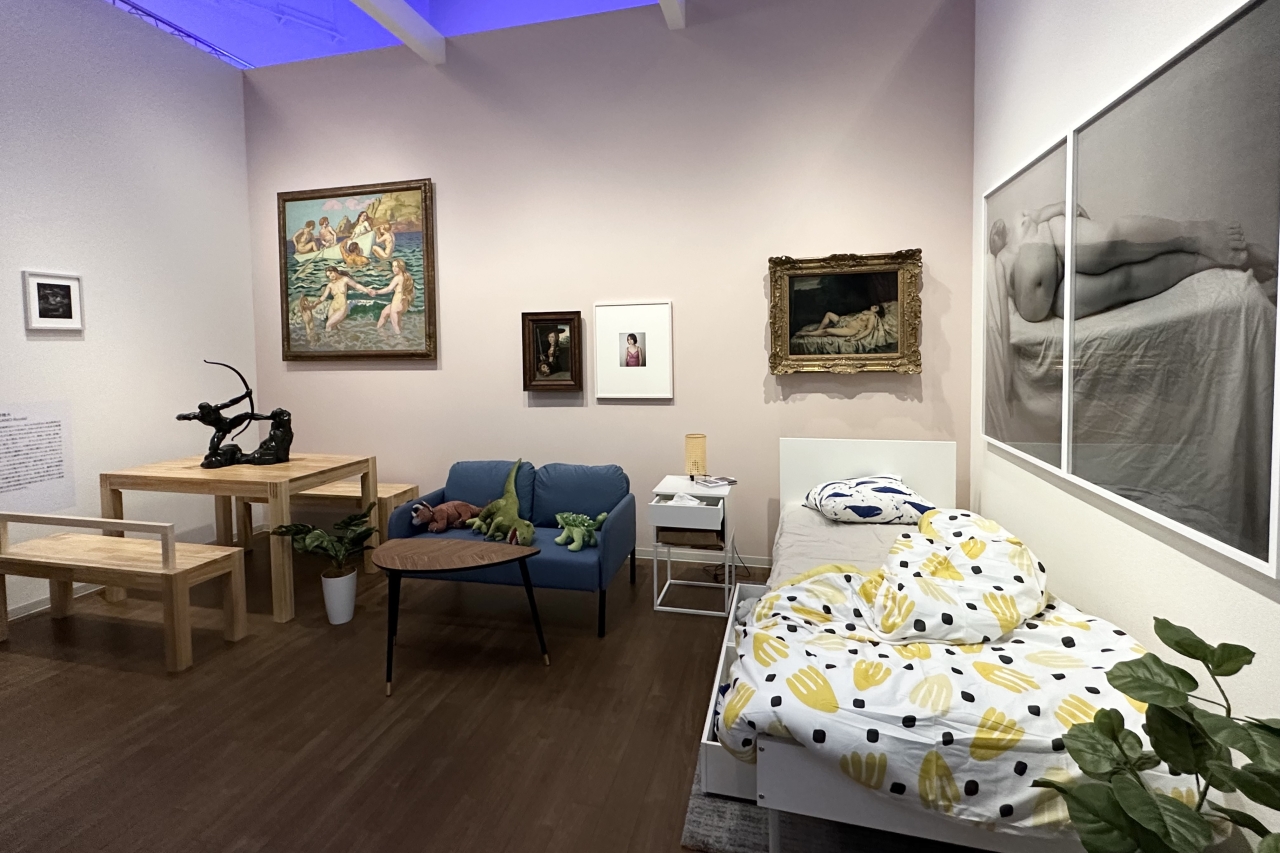
Ryudai Takano's Exhibition
What would it look like if masterpieces that are out of reach for individuals were displayed side by side in an average modern room? With this in mind, Takano exhibited paintings by Gustave Courbet, Vincent van Gogh, and Lucas Cranach the Elder, sculptures by Emile-Antoine Bourdelle, and his own photographs from the museum's collection, in a space made entirely of IKEA furniture.
Takano considers IKEA products to be the pinnacle of modernist design, eliminating decorative elements that indicate authority and enabling people to live simple and rich lives. Anyone would immediately feel uncomfortable seeing Courbet or Bourdelle, who should be found in a prestigious art museum, placed in a setting that would never appear in our everyday spaces filled with affordable fashion. The muscular Hercules sculpture, which overly expresses a certain type of "man is strong," would be admired for its imposing grandeur if it were in the front garden of the museum, but it is a complete mismatch in this smart room and appears to be at odds with modern sensibilities.
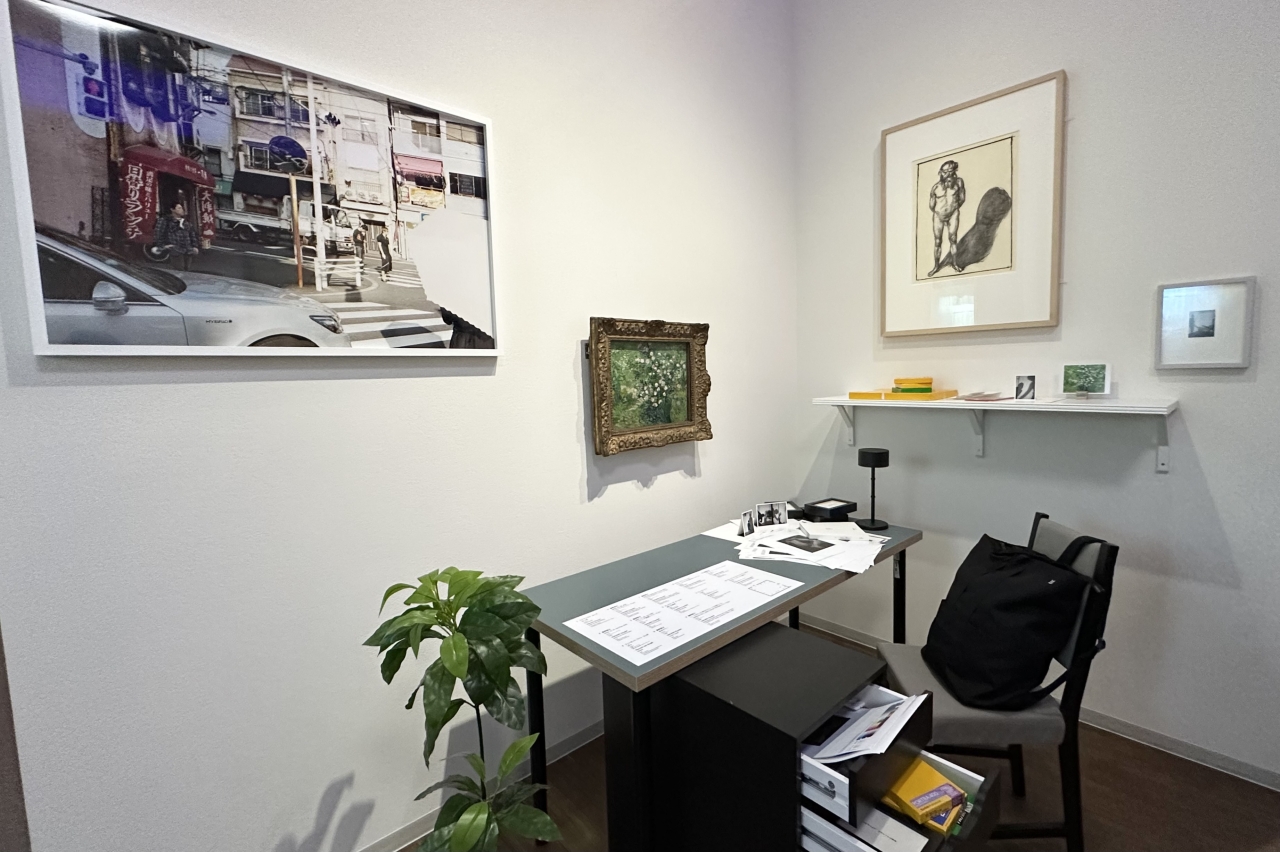
Ryudai Takano's Exhibition
The way the works appear changes as the psychological distance becomes closer, but at the same time, I also realized the difficulty of appreciating and judging the value of the work "only" as it is, without being influenced by the exhibition space.
Although the museum is an institution that wants to preserve works in an immortal state and leave them for the future in perpetuity, works as materials are inevitably subject to slow change over time. Chapter 5, "Is this the place where works live?", focuses on Claude Monet's Water Lilies, Reflections of Willows, from the former Matsukata Collection, which was discovered in a heavily damaged state at the Louvre in 2016 and then moved to the museum's collection.
In his work "Restored CM's 1916 Water Lilies," he imaginatively supplemented the missing parts of a gigantic oil painting measuring 199.3 cm in height and 424.4 cm in width, which had only undergone minimal conservation treatment, with a translucent cloth and silk thread, creating a double-layered structure.
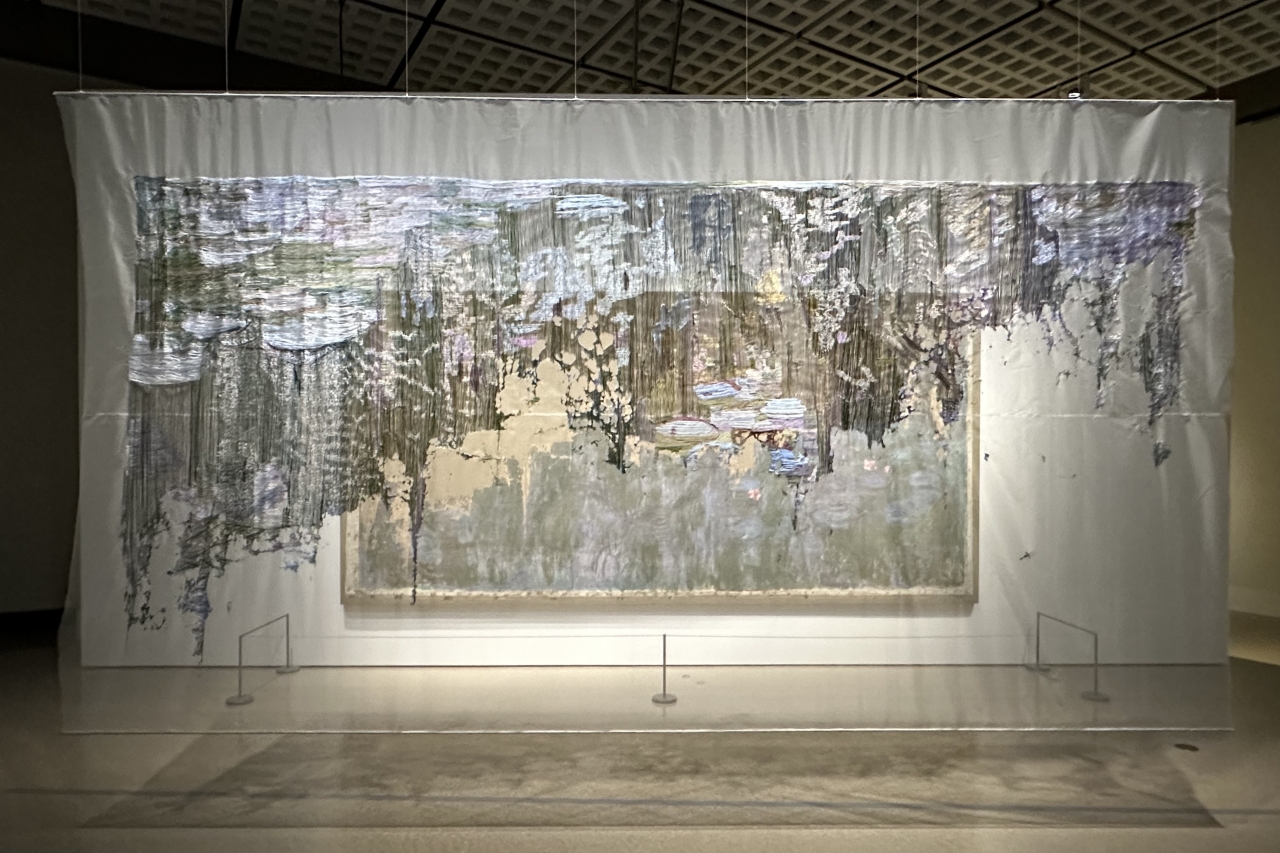
Takemura Kyo, "Restored Commercial Water Lilies from 1916" (2023–2024), silk thread, silk organza, artist's collection
Takemura is critical of excessive restoration, which overwrites works created at one time with the "words" thought by people of different eras. In this work, the lost memories of the past are delicately retranslated using reversibly unraveling silk thread, "like translating Western paintings into Japanese," thus practicing a method of preservation that gives the work a radiance while acknowledging its loss as it is and leaving it for the future.
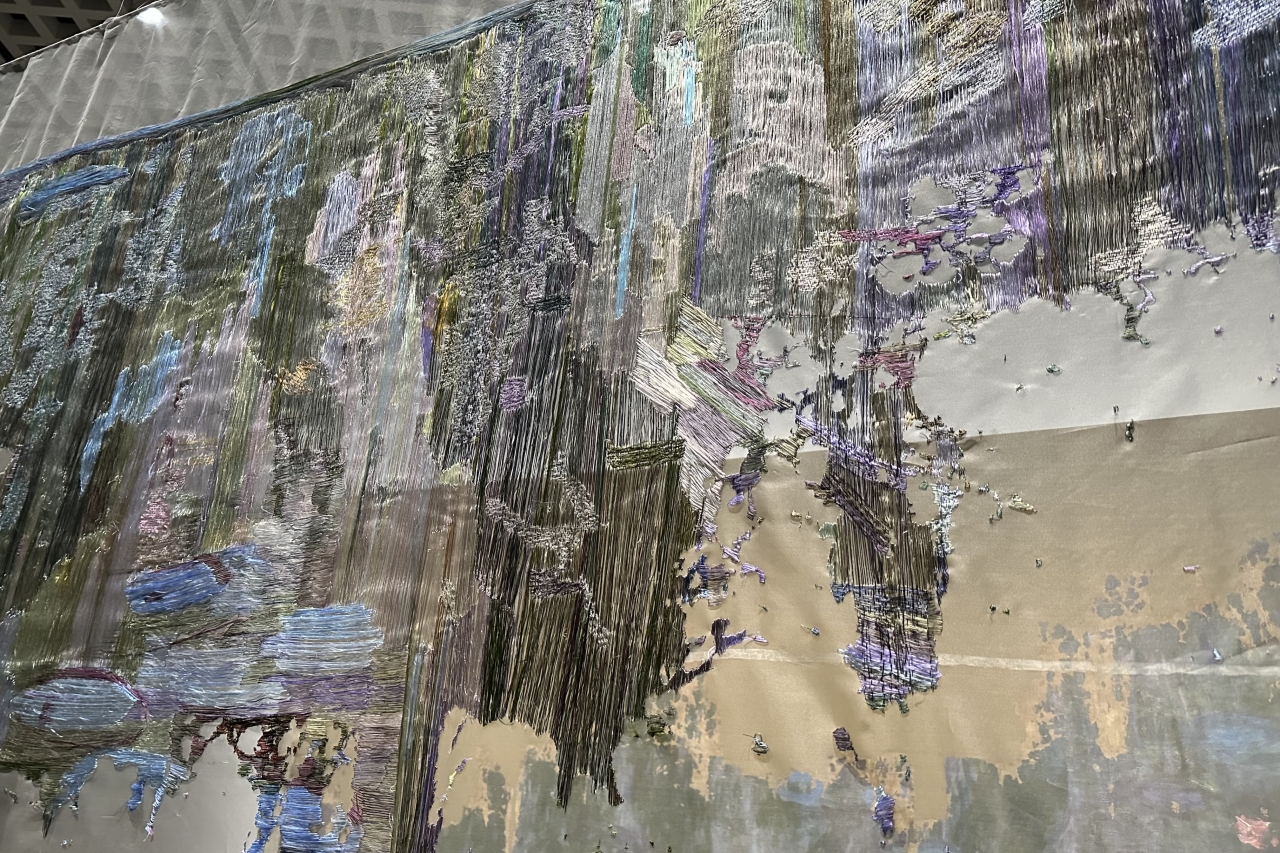
Takemura Kyo, "Restored Commercial Water Lilies of 1916" (detail) (2023-2024), silk thread, silk organza, artist's collection
The final chapter, Chapter 7, "In Search of Unknown Arrangements," simply poses works by Sugito Hiroshi, Umetsu Yoichi, Sakamoto Natsuko , and Tatsuno Toeko , who passed away in 2014, in the same space as highly experimental paintings by Claude Monet, Paul Signac, Jackson Pollock, and others of the past, in an attempt to consider what is known as Japanese "contemporary art" and measure the scope of its experimental nature.

Chapter 7 Exhibition
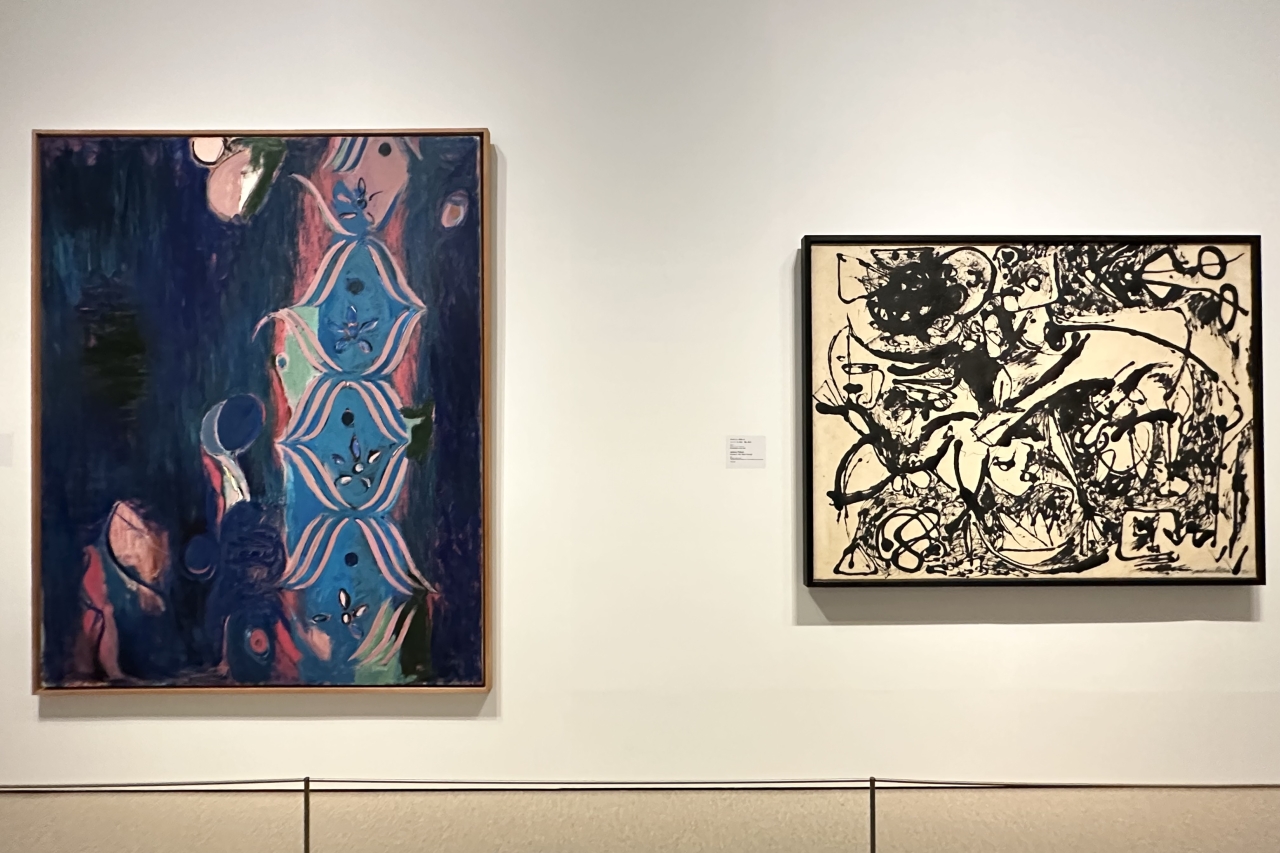
Exhibition in Chapter 7: From left: Toeko Tatsuno, Work 85-P-5 (1985), Jackson Pollock, Number 8, 1951, Black Stream (1951)
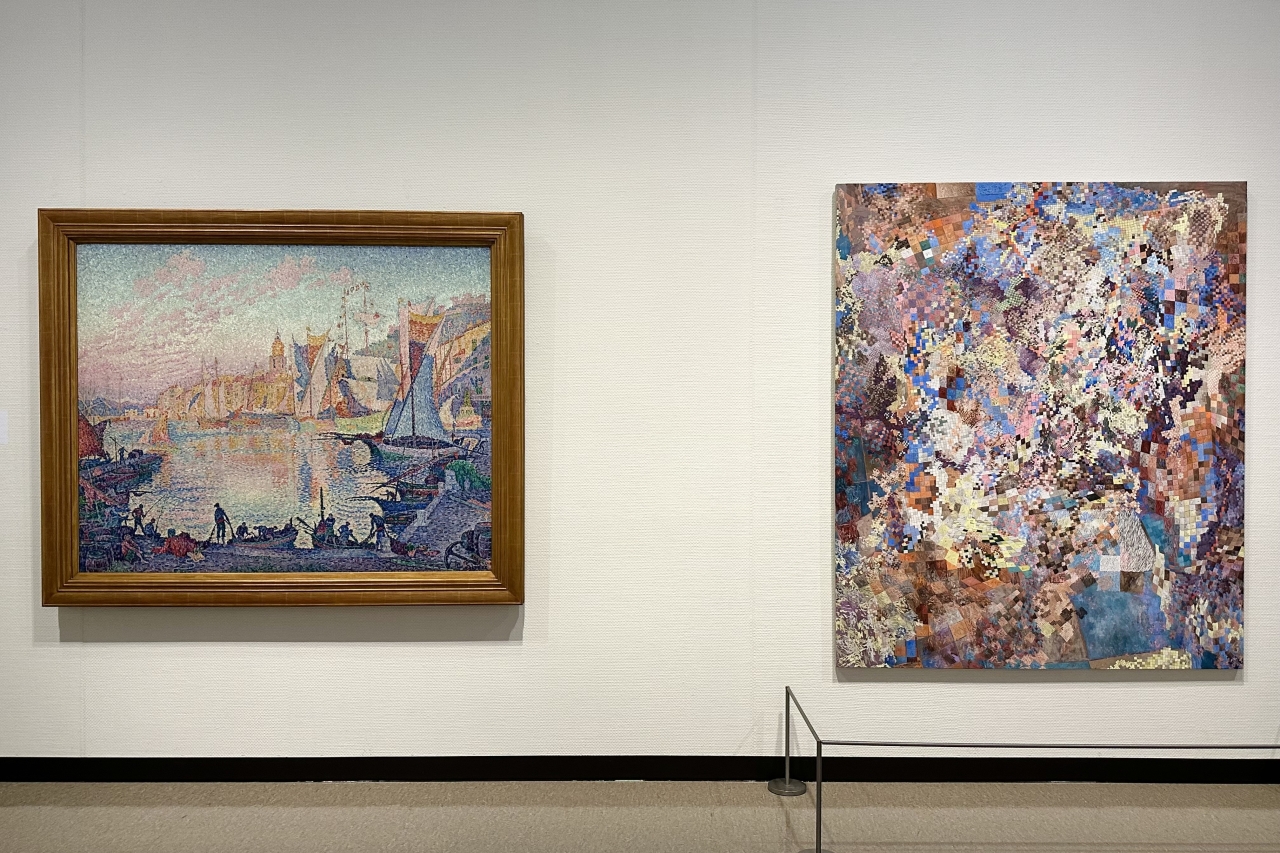
Exhibition in Chapter 7: From left: Paul Signac's "Port of Saint-Tropez" (1901-02), Natsuko Sakamoto's "Entrance" (2023)
Jun Shindo, a curator at the National Museum of Western Art and the organizer of this exhibition, said, "To be frank, I was left with the strong feeling that the National Museum of Western Art has not been a place that can inspire today's cutting-edge artists. Some of the participating artists in this exhibition were inspired by the museum and its collection, but this was because the opportunity was provided for them.
For this reason, in the final chapter, rather than asking how the NMWA's collection has/could inspire artists living today, he explained his intention by saying, "I wanted to ask how the works of today's painters can compete with works of the past. I hope that this will bring to light the similarities and differences in the mutual concerns of artists across the ages."
Shindo also said, "I expect there will be a lot of criticism of my curatorial approach," but rather than expecting various voices to be raised, I get the impression that he is actively seeking criticism. What message did the participating artists send about the National Museum of Western Art and its collection? How will this affect the Japanese contemporary art world? I hope you will visit the exhibition and take a sharp look at the whole picture.
Overview of "Has this become a place where future artists can rest? ──The National Museum of Western Art's 65th Year Questions | Questions to Contemporary Artists"
| Dates | March 12th (Tue) – May 12th (Sun) 2024 |
| venue | National Museum of Western Art, Special Exhibition Room |
| Opening hours | 9:30-17:30 (9:30-20:00 on Fridays, Saturdays, April 28th (Sunday), April 29th (Monday, national holiday), May 5th (Sunday, national holiday) and May 6th (Monday, national holiday)) *Last admission is 30 minutes before closing. |
| closing day | Monday, Tuesday, May 7th *However, the museum will be open on April 29th (Monday, national holiday), April 30th (Tuesday), and May 6th (Monday, holiday). |
| Admission fee (tax included) | Adults: 2,000 yen, university students: 1,300 yen, high school students: 1,000 yen
*Free for junior high school students and younger |
| Organizer | National Museum of Western Art |
| inquiry | 050-5541-8600 (Hello Dial) |
| Official exhibition page | https://www.nmwa.go.jp/jp/exhibitions/2023revisiting.html |
*The contents of this article are current as of the time of coverage. Please check the official exhibition website for the latest information.
<Past interview articles>
[Tokyo Metropolitan Art Museum] Report on "Impressionism: From Monet to America, Worcester Art Museum Collection." Experience the diverse expressions of Impressionism that spread across the ocean


